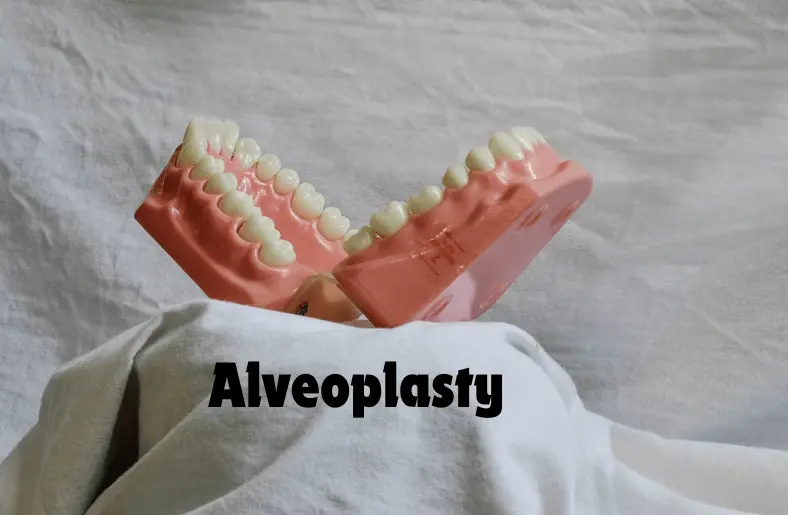Alveoplasty, also known as jawbone reshaping, plays a crucial role in dental health. After tooth extraction, the jawbone’s ridges often remain uneven, posing challenges for future dental work. Alveoplasty addresses this issue by smoothing and contouring the bone surface, promoting optimal healing and reducing discomfort. By enhancing the jawbone’s condition, they set the stage for successful dental restorations like implants or dentures. This procedure is commonly recommended to improve the fit and stability of prosthetic devices, ensuring a comfortable and functional outcome for patients. Understanding the significance of they can empower individuals to make informed decisions about their oral health and treatment options.
Understanding the Need for Alveoplasty
After tooth extraction, the jawbone may develop irregularities, causing discomfort and complications. Consequently, they becomes necessary to smoothen these uneven surfaces, ensuring a more comfortable fit for future dental restorations. Factors such as bone quality and the extent of tooth loss determine the need for alveoplasty. Timely intervention can prevent potential issues and streamline the process of receiving dental implants or dentures. While not everyone may require alveoplasty, its benefits in promoting healing and improving oral health are significant. Therefore, understanding the need for they empowers individuals to make informed decisions about their dental care.
When is Alveoplasty Necessary?
Alveoplasty becomes necessary when irregularities in the jawbone affect dental restoration outcomes. Factors like tooth loss, bone quality, and the presence of sharp edges determine the need for alveoplasty. Early intervention after tooth extraction minimizes complications and reduces the need for additional procedures. However, not everyone requires alveoplasty, as some individuals may have sufficient bone structure to support restorations. The decision to undergo they depends on individual circumstances and the recommendations of dental professionals. Ultimately, the goal is to optimize oral health and ensure successful outcomes for a dental implant or denture placement.
The Alveoplasty Procedure
During alveoplasty, the oral surgeon carefully reshapes the jawbone using specialized instruments. First, a local anesthetic numbs the mouth to ensure a pain-free experience. Next, an incision is made in the gum to expose the jawbone. Various tools, such as a bone file or drill, are then used to sculpt the bone to the desired shape. Once the ideal contour is achieved, the gum flap is repositioned and sutured closed. Patients receive instructions on post-operative care, including dietary restrictions and oral hygiene practices. Overall, the alveoplasty procedure aims to create a smooth and even surface for future dental restorations.
Recovery and Aftercare
After alveoplasty, patients may experience some discomfort, which they can manage with over-the-counter pain medication. It’s important for patients to follow a soft diet to avoid irritating the surgical site. Patients should also adhere to oral hygiene practices, including gently rinsing with salt water. Dentists usually remove stitches within a week to ten days, but full healing may take several weeks. Dentists may prescribe antibiotics to prevent infection, especially for those who had multiple teeth removed. Regular follow-up appointments with the dentist ensure proper healing and monitor for any signs of complications.
Alveoplasty and Future Dental Restorations
Alveoplasty plays a crucial role in preparing the mouth for future dental restorations like implants or dentures. By smoothing out the jawbone, alveoplasty creates a stable foundation for these restorations. This procedure ensures a comfortable fit and reduces the risk of complications during restoration placement. Additionally, they promotes proper healing, which is essential for the success of future dental procedures. Dentists may recommend alveoplasty to patients undergoing restorative treatments to optimize outcomes and enhance overall oral health. Ultimately, they set the stage for successful and long-lasting dental restorations, improving the patient’s quality of life.
Conclusion
In conclusion, alveoplasty is a crucial procedure in dentistry, aimed at reshaping the jawbone for optimal dental restoration outcomes. By addressing irregularities and creating a smooth surface, they set the stage for successful procedures such as dental implants or dentures. Patients can expect improved comfort, stability, and overall oral health following alveoplasty. It’s essential for individuals undergoing tooth extraction or seeking dental restorations to consult with their dentist about the potential need for alveoplasty. With proper care and follow-up, they can significantly enhance the effectiveness and longevity of dental treatments, ensuring a brighter smile and better quality of life.




